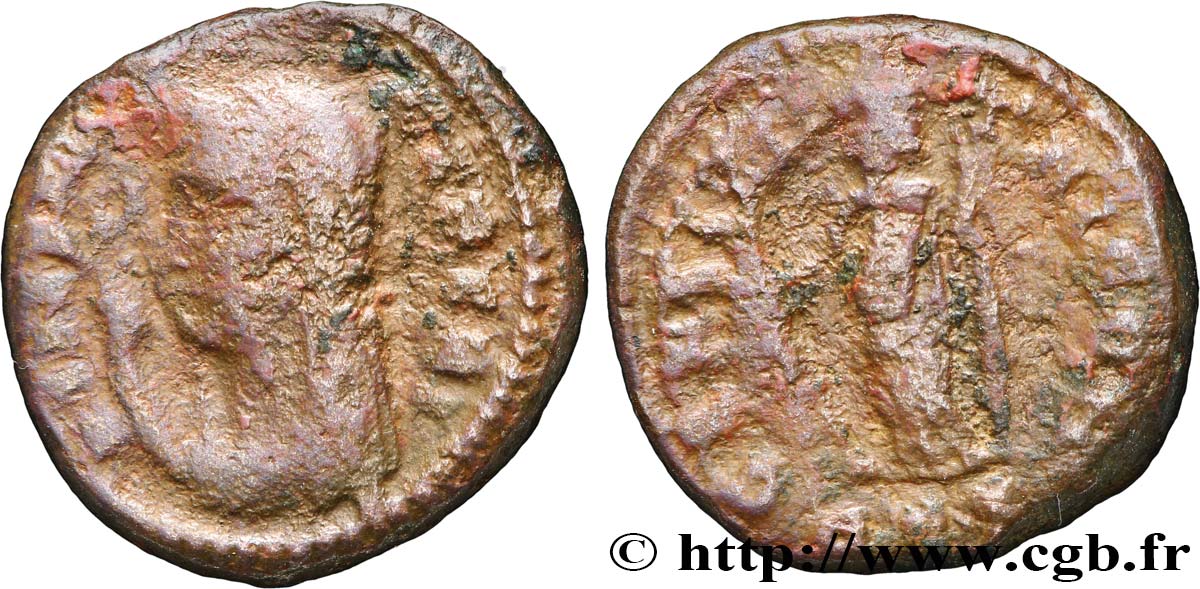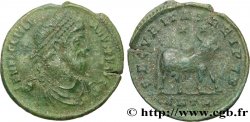E-auction 515-428336 - brm_596207 - JULIAN II THE PHILOSOPHER Petit bronze (PB, Æ 4)
You must signin and be an approved bidder to bid, LOGIN TO BID. Accounts are subject to approval and the approval process takes place within 48 hours. Do not wait until the day a sale closes to register. Clicking on « bid » constitutes acceptance of the terms of use of cgb.fr private e-auctions.
Bids must be placed in whole Euro amounts only. The sale will start closing at the time stated on the item description; any bids received at the site after the closing time will not be executed. Transmission times may vary and bids could be rejected if you wait until the last second. For further information ckeck the E-auctions F.A.Q.
NO BUYER'S FEE.
NO BUYER'S FEE.
| Estimate : | 250 € |
| Price : | 57 € |
| Maximum bid : | 100 € |
| End of the sale : | 27 February 2023 14:28:00 |
| bidders : | 7 bidders |
Type : Petit bronze (PB, Æ 4)
Date: c. 361-363
Mint name / Town : Roma
Metal : copper
Diameter : 13,5 mm
Orientation dies : 12 h.
Weight : 2,15 g.
Rarity : R3
Officine: 3e
Coments on the condition:
Exemplaire sur un petit flan épais bien centré des deux côtés à l’usure très importante, identifiable
Catalogue references :
Obverse
Obverse legend : DEAE SANC - CERERI.
Obverse description : Buste diadémé, voilé et drapé de Cérès à gauche, levant la main droite et tenant deux éis .
Obverse translation : “Deae Santæ Cereri”, (À la sainte déesse Cérès).
Reverse
Reverse legend : [GEN] CIVIT NICOM/ -|-// OPA.
Reverse description : Tyché/ Fortuna (la Fortune) coiffée du modius drapée debout à gauche, tenant un gouvernail de la main droite et une corne d’abondance de la main gauche.
Reverse translation : “Genio Civitatis Nicomediæ”, (Au génie de la cité de Nicomédie).
Commentary
Poids lourd. Ce type est l’un des plus rares de ce monnayage, abondant et iconographiquement riche mais de la plus grande rareté dans les collections. Ce monnayage remplissait-il un rôle religieux, un rôle politique, un rôle de propagande ? Près de soixante-dix ans après la publication du travail d’A. Alföldi, ce monnayage reste toujours une énigme.








 Report a mistake
Report a mistake Print the page
Print the page Share my selection
Share my selection Ask a question
Ask a question Consign / sell
Consign / sell
 Full data
Full data









